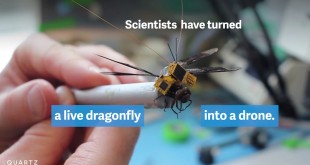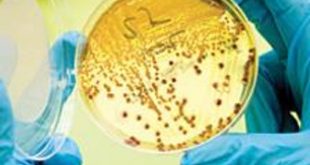In a world increasingly focused on sustainable energy solutions, DARPA’s latest initiative, the BioLogical Underwater Energy (BLUE) program, is setting its sights on a groundbreaking approach to harnessing the vast, untapped energy potential of our oceans. This innovative program aims to develop power supplies that capture and convert microscopic marine biomass into electrical power, all while maintaining a low environmental impact. This could revolutionize the operation and longevity of ocean-deployed sensors and systems.
Harnessing Marine Biomass for Energy
The BLUE program is investigating the potential of using dissolved organic matter, phytoplankton, zooplankton, and even microplastics as continuous fuel sources for ocean-deployed sensors. These tiny, energy-dense forms of marine biomass are abundant in the ocean, offering a sustainable way to extend the mission life of these sensors without the need for frequent servicing.
The Challenges of Current Ocean-Deployable Sensors
Currently, ocean-deployed sensor systems, such as seabed-mounted profiling devices, play a crucial role in national security, marine environment monitoring, and climate change research. These systems, which measure parameters like water temperature, salinity, and flow patterns, rely heavily on batteries for power. While endurance can be extended by reducing power consumption, active, high duty cycle sensors, data processing, and communications require significant electrical power, and compromising on any one of these capabilities diminishes operational value.
Currently, batteries are the most deployable technology, but they are not increasing in energy density fast enough to achieve the desired level of performance in the foreseeable future. However, the finite energy densities and space constraints of batteries limit their operational endurance. This necessitates regular servicing to recharge or replace depleted batteries, which is logistically demanding, expensive, and risky for personnel.
Alternative options, such as aluminum, diesel, and hydrogen also cannot achieve the energy density needed to meet BLUE specifications. While solar energy can enable systems to operate for more than a year, their power density is also too low to support highly capable payloads. As such, nearly all ocean-deployed sensor systems are designed and operated within the constraints of battery-limited energy budgets resulting in limited capabilities and/or endurance.
Program Overview
The BLUE program seeks to develop technologies that provide continuous electrical power, thus expanding the capabilities of remote, ocean-deployed sensor systems. These systems hold significant potential for national security, understanding marine environments, and monitoring climate change. However, the reliance on batteries imposes limitations due to space constraints and finite energy densities. Servicing these systems to recharge or replace batteries is expensive, logistically demanding, and risky for personnel.
The primary objective of this initiative, known as the BioLogical Underwater Energy (BLUE) program, is to create self-refueling power supplies that will enable remote, ocean-deployed sensor systems to operate far longer than they currently can with traditional battery packs. The 30-month BLUE program aims to develop a novel power supply system that can provide sustainable, ultralong endurance power to ocean-deployed sensors.
If successful, this system would dramatically reduce the need for battery replacements, thereby enhancing the operational value of these sensors. Dr. Leonard Tender, BLUE program manager, elaborates on the vision: “We hypothesize that the energy requirements of many ocean-deployed systems can be met by developing an onboard device that converts marine biomass into simple fuels, which are then converted into operational power.”
Innovative Approach and Research Goals
The BLUE program aims to overcome these challenges by developing an oceanographic power supply capable of sustaining at least 0.1 kW of average continuous power for over a year while remaining fully submerged and self-refueling on marine biomass.
The program will initially focus on several key areas:
- Characterizing Microscopic Marine Biomass: Understanding which types of marine biomass can be effectively utilized to generate electrical power.
- Identifying Key Environmental Features: Determining the optimal conditions and environments to achieve program goals.
- Leveraging Biological Processes: Developing processes to convert marine biomass into electrical power.
- Developing Capture and Transport Strategies: Enabling up to one year of continuous power generation by refining the capture and conversion processes.
- Conducting Comprehensive Impact Analysis: Ensuring that the new system is safe and has minimal environmental impact.
Program Objectives
Developing an oceanographic power supply that can sustain at least 0.1 kW average continuous power for over a year while remaining fully submerged, not needing to be serviced, fitting within a ≤180 L, ≤200 kg form factor, and that self-refuels on marine biomass will enable significantly enhanced operational capabilities.
1. Identify and Select Targeted Input Materials: Each research team will focus on identifying and selecting microscopic forms of marine biomass, such as dissolved organic matter, phytoplankton, and zooplankton, which can be converted into electrical power. The chosen biomass forms must be abundant in many locations and can be captured and utilized with negligible ecological impact.
2. Key Environmental Features: Teams will determine the key environmental features, including water current, oxygen concentration, salinity, and temperature, that affect the capture and conversion of input materials to electrical power. These features must be reliably predictable from existing data sets like satellite imaging and in situ detection methods.
3. Develop Laboratory Test Beds and Field Sites: Each team will establish a laboratory test bed for efficient experimentation and a field site within United States territorial waters for testing brassboard systems (experimental systems for field testing). This field site will enable real-time monitoring of power output and must comply with all relevant local and federal regulations.
4. Self-Capture and Convert Input Materials to Electrical Power: Teams will develop brassboard systems capable of self-capturing and converting selected input materials into electrical power while fully submerged. These systems will be evaluated through 30-day technology field demonstrations and independent assessments by a government-provided team.
5. Achieve Endurance: Although the initial field demonstrations will last 30 days, teams must develop strategies to sustain power production for one year of continuous operation. This includes addressing potential decay in power generation, system integrity, and consumable materials’ utilization rates.
6. Incorporate Ocean Engineering: Successful BLUE efforts will require rigorous ocean engineering to ensure the power supplies can withstand marine environments’ challenges, such as corrosion and fouling, and operate continuously without servicing.
7. Satisfy Biosafety Design Requirements: Teams will devise robust containment and deactivation methods for non-native biological materials used in conversion processes, ensuring compliance with all relevant standards and securing necessary approvals and permits.
8. Satisfy Ecological and Environmental Requirements: Teams will complete comprehensive ecological and environmental impact analyses to ensure the system’s safety and minimal impact on marine environments.
9. Address Ethical, Legal, and Societal Implications (ELSI): Each team will engage with experts to identify and address potential ELSI concerns that are not covered in the broader program requirements.
Collaborative and Ethical Considerations
BLUE performers will collaborate with U.S. government and defense stakeholders, regulatory authorities, and ethical, legal, and societal implications experts to ensure the program’s safety and efficacy. An independent verification and validation team will conduct an environmental assessment of biomass consumption within the first three months of the program.
A Game Changer in Ocean Energy
The ultimate goal of the BLUE program is to provide transformative improvements over state-of-the-art batteries and other power supplies, enabling high capability and long endurance for remote, ocean-deployed sensor systems. By self-refueling on readily available marine biomass, preventing the capture of macroscopic organisms, and ensuring durability and reliability, BLUE technologies will revolutionize ocean energy solutions.
“Achieving battery-level power persistently and while fully submerged would be a game changer,” adds Dr. Tender. The success of the BLUE program could lead to significant advancements in the way we power and deploy ocean sensors, making long-term underwater monitoring more feasible and less resource-intensive.
 International Defense Security & Technology Your trusted Source for News, Research and Analysis
International Defense Security & Technology Your trusted Source for News, Research and Analysis

